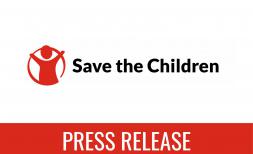In horror year for Dengue, Laos capital sees major drop in cases

VIENTIANE, 27 February 2024 – In a year that saw a rise to at least 5 million cases and 5,500 deaths from dengue fever globally across most continents, Vientiane – the capital of Laos – reported a drop of nearly 60% of cases of the mosquito-borne illness between 2023 and 2022, which may in part be due to a new pilot initiative between Ministry of Health, Save the Children and the World Mosquito Program (WMP).
Mosquitoes carrying the Wolbachia bacteria – which makes it significantly harder for the mosquito to transmit viruses such as dengue to humans - were released as part of a project in two districts of Vientiane between April and August 2023. The aim is for these mosquitos to breed with the local mosquito population until, over several generations, almost all mosquitos have the Wolbachia bacteria, and cases of dengue significantly reduce. The Wolbachia bacteria is natural and harmless to ecosystems and humans.
Last year there was a decrease in dengue cases in Vientiane, with reports of more than 6,500 cases between January and November 2023 compared to around 16,000 cases in 2022. While it’s too early to attribute the change in cases to the Wolbachia project, a similar WMP Wolbachia project in Yogyakarta, Indonesia, found dengue incidence also decreased by 77% and dengue hospitalisations were down by 86%, according to a randomised control trial of the Indonesia project, published in 2021.
Between January and November 2023, there were around 13,500 cases of dengue in children aged under 18, out of a total of around 35,500 cases. This means children accounted for about 40% of dengue cases in the country, according to the Laos Ministry of Health.
Children are particularly vulnerable to dengue as their immune systems are weaker, and they tend to play outside where there's less protection against mosquitos. Common symptoms of dengue include fever, rash, nausea and aches and pains. Bang-on, 66, a nursery volunteer from Laos, said:
“Blood comes out from gums or nose and children have trouble breathing. They breathe heavily and also get a fever. Treatment is difficult. Some need respiratory assistance because they cannot breathe. That's why we're determined to prevent.”
Dengue impacts many areas of children’s lives, including their education, Bang-on said:
“We feel bad for the children who cannot go to school. Parents lose their time too as they must care for children at the hospital and they lose their money. They lose everything.”
Children are also at risk when their caregivers fall ill with dengue. Milly, a nine-year-old girl from Laos, was scared when her mother contracted dengue, said:
“I was worried that my mother wouldn't be able to leave the hospital. I think that mosquitoes are more dangerous than a tiger. I want to say, please don't feed on people's blood.”
There are limited treatments for dengue so prevention is key. The project is aiming to help protect 86,000 people from dengue in the targeted districts of Vientiane, a city of around 990,000 people.
The project team works closely with local communities, so they understand how releasing Wolbachia mosquitos can reduce dengue cases. Saysamone, 33, a field coordinator with Save the Children in Laos said:
“We work with the community. It’s critical that we get acceptance.”
“This is a good project because it's a new way to protect the community, reduce the infected mosquitoes and also decrease local transmission. It makes our community safe.”
Luke Ebbs, Country Director Save the Children in Laos, said data showed thatglobally the climate crisis has led to spikes in mosquito-borne diseases such as dengue, as mosquitoes prefer warmer weather, and flooding leads to more stagnant pools of water for laying eggs. He said:
“Wolbachia mosquitos are a safe, cost-effective, and sustainable solution for preventing dengue in the long-term. The program is replicable in other parts of Laos and the world.”
“As a result of the climate crisis Laos will suffer from more frequent floods and droughts. Save the Children urges world leaders to take action to fight climate change, which is contributing to spikes in mosquito-borne diseases like dengue fever, which is so dangerous to children.”
Save the Children has supported children in Laos since 1987, focusing on health and nutrition, child protection, education, the climate crisis and the environment. The organisation runs awareness raising campaigns about dengue, including sharing information about its transmission and prevention. In 2022, Save the Children directly supported more than 200,000 children in Laos.
*******************************************************************************************************************
For further enquiries please contact:
- Daphnee Cook Daphnee.cook@savethechildren.org
Our media out of hours (BST) contact is media@savethechildren.org.uk / +44(0)7831 650409
Please also check our Twitter account @Save_GlobalNews for news alerts, quotes, statements and location Vlogs.




